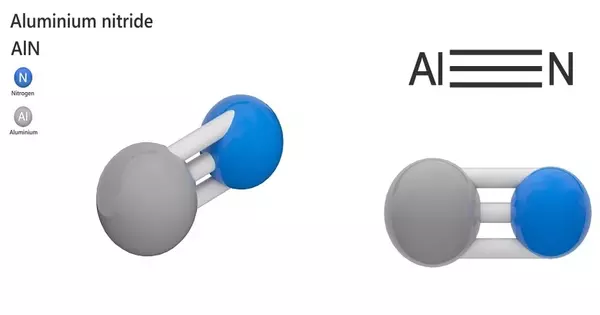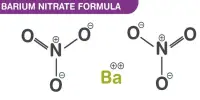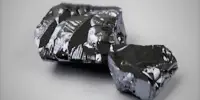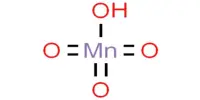Aluminium Nitride (AlN) is a compound of aluminum and nitrogen. It is a solid aluminium nitride. It is a ceramic material with high thermal conductivity, electrical insulation, and mechanical strength. AlN is a wide-bandgap semiconductor material and has applications in the field of optoelectronics, power electronics, and microelectronics. It is an electrical insulator with a high thermal conductivity of up to 321 W/(m•K). Its wurtzite phase (w-AlN) has a band gap of ~6 eV at room temperature and could be used in optoelectronics that operate at deep ultraviolet frequencies.
Properties
- Chemical formula: AlN
- Molar mass: 40.989 g/mol
- Appearance: white to pale-yellow solid
- Density: 3.255 g/cm3
- Melting point: 2,500 °C (4,530 °F; 2,770 K)
- Solubility in water: hydrolyses (powder), insoluble (monocrystalline)
- Solubility: insoluble, subject of hydrolysis in water solutions of bases and acids
- Band gap: 6.015 eV (direct)
- Electron mobility: ~300 cm2/(V·s)
- Thermal conductivity: 321 W/(m·K)
- Crystal structure: Wurtzite
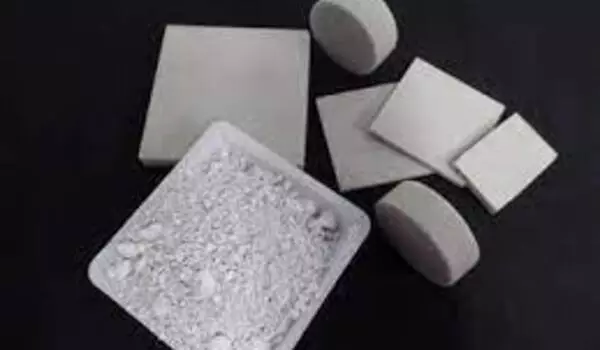
Stability and chemical properties
Aluminium nitride is stable at high temperatures in inert atmospheres and melts at around 2200 degrees Celsius. AlN decomposes in a vacuum at ~1800 °C. Surface oxidation occurs in the air above 700 °C, and surface oxide layers of 5-10 nm thickness have been detected at room temperature. This oxide layer protects the material up to 1370 degrees Celsius. Above this temperature, bulk oxidation takes place. Up to 980 °C, aluminium nitride is stable in hydrogen and carbon dioxide atmospheres.
- High thermal conductivity: AlN has a thermal conductivity of about 170 W/mK, which is five times higher than that of alumina (Al2O3) and comparable to that of copper. This makes it an excellent choice for thermal management in high-power electronics.
- Electrical insulation: AlN is an excellent electrical insulator with a dielectric constant of about 8.9. It also has a high breakdown voltage and low dielectric loss, making it suitable for high-temperature and high-frequency applications.
- Mechanical strength: AlN has high strength and stiffness, making it a suitable material for structural applications such as substrates for electronic devices.
- Optical properties: AlN is a wide-bandgap semiconductor material with a bandgap of about 6.2 eV. It has high transparency in the ultraviolet (UV) and visible regions of the spectrum, making it a promising material for UV light-emitting diodes (LEDs) and detectors.
Applications
- Thermal management: AlN is widely used as a substrate material for high-power electronic devices such as power transistors, thyristors, and diodes. It is also used as a heat spreader in semiconductor packages.
- Optoelectronics: AlN has potential applications in UV LEDs, detectors, and photovoltaic devices.
- Electronic packaging: AlN can be used as a dielectric material in multilayer ceramic capacitors (MLCCs) and other electronic components.
- Aerospace and defense: AlN is used in missile guidance systems, radar systems, and other military applications due to its high thermal conductivity and electrical insulation properties.
